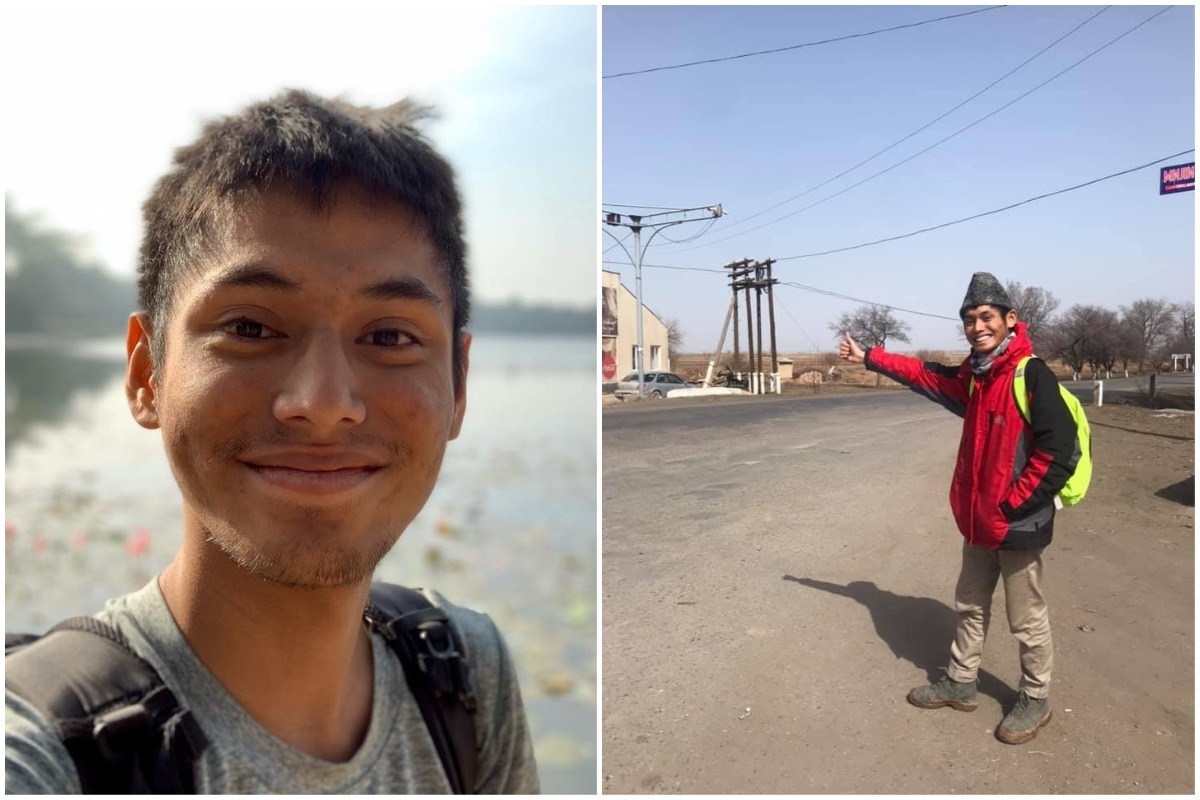In 2015, a Singapore-based traveller by the name of Dina Malyana embarked on an epic Singapore to Europe trip without flying. Taking seven weeks and S$3,000 in expenses, the journey brought her to Malaysia, Thailand, Laos, Vietnam, China, Mongolia, and Russia. It’s quite the adventure! But, have you heard of Ganesha Balakrishnan?
If you’ve ever wondered what it would be like to travel flight-free not just the way Malyana did, but take it a step further, then Balakrishnan is the person you’re looking for. In 2018, the then 20-year-old Singaporean travelled from Singapore to Canada without hopping on a single aircraft. Instead, the trip involved riding plenty of private vehicles, some public transportation, and a cross-continental freighter.
Also read: Singapore to Europe by Land: It Took Me 7 Weeks & S$3,000

Why and when the journey took place
Balakrishnan just got out of his two-year duty at Singapore’s National Service when he thought of taking the trip. “I really wanted to do something that not many people have done, or maybe even no one has done before,” he said via VICE Asia.
In another interview with Mothership.sg, the young traveller also shared that he was inspired by travel shows when he was in his teenage years. They would often involve travelling between Asia and Europe overland. He initially thought of travelling from Singapore to London without flying, but added that he wanted more challenge.
The opportunity came when he got accepted into a university in Canada, where his parents were living. The term would start almost an entire year after returning to his normal, civilian life. When Balakrishnan realised he had that a lot of free time in his hands, the idea of travelling from Singapore to Canada, specifically, Montreal, came to mind.
With a budget of US$10,000, which he already had been saving, he left Singapore on 30 Nov 2018. He would find himself traversing 23 countries in three continents with barely any plans other than to reach North America in less than 10 months, when his studies would start. He eventually made it about a week before his first day in school.

“I didn’t really do a lot of planning. In fact 80 to 90 percent of the time, I was unsure about what to do a week later,” Balakrishnan said. On top of the money, he also packed a camera, laptop, tent, sleeping bag, and of course, some clothes in a 60-litre backpack.
Also read: 2021 Backpack Guide: The 12 Best Backpacks Every Traveller Needs to Own
Singapore to Canada without flying
Although the trip was totally flight-free from beginning to end, Balakrishnan did rely on other forms of transportation to travel between destinations. Mostly, it was cars, trains, buses, and boats. Either he hitchhiked, or paid for the cheapest ticket to at least get on a public vehicle. At some point, he would settle on a train floor to sit or sleep on.
The first leg of his journey was to travel across Asia through the following countries: Malaysia, Thailand, Laos, Cambodia, Vietnam, China, and North Korea. From North Korea, he crossed China once more to get all the way to Kazakhstan. Then, he moved on to places like Tajikistan, Turkmenistan, Iran, and Turkey, which marked the end of his time in Asia.
From Turkey, he also visited two European countries, Czech Republic and Germany. He arrived in the German port city of Bremerhaven eight months after the start of his trip. There, he got on a trans-Atlantic cargo ship that would take him to Charleston in South Carolina, United States of America. The voyage took 11 days all in all.

Upon arriving in the US, he went up to Virginia and explored Maine, Massachusetts, Connecticut, and New York. There, he finally met up with his parents and the road trip to Montreal, Canada began, while ending his nine-month backpacking trip.
Also read: Hitchhiking in New Zealand from Coast to Coast: Here’s How I Did It!
Accommodation, safety, and tips
The intrepid traveller had set a daily budget of only S$25, which he spent largely on food and sometimes, housing. Although, it was through couchsurfing and camping that he was able to save a lot.
“Couch-surfing worked in most places but not all the time,” he shared again via VICE Asia. Through it, Balakrishnan was able to make new friends while being accommodated free of charge. On the downside, he was once held hostage by a couchsurfing host in Tajikistan who got jealous of the fact that the traveller was planning to move to another couchsurfer. He escaped ultimately, of course.
Other than that, when couchsurfing didn’t seem like a good idea, he would go to a cheap hostel or other means. “If the hostel was [still] a bit over my budget, then I’d pitch a tent at a park or beach. Sometimes, I slept at train stations if I was too lazy to set up the tent,” he added.

As for safety and other travel tips for doing the Singapore to Canada adventure, he shared the following via Mothership.sg:
- Don’t use ATMs as much as possible to avoid expensive withdrawal fees. Also, consider changing your money at your destination rather than your origin.
- Go to gas stations to safely get drivers to hitchhike with. Otherwise, use the conventional method of flagging them down on the road using a signage or your thumb.
- Converse in the local’s language if you can. Balakrishnan used Russian when in some parts of Central Asia.
- Although good for security and convenience, avoid bringing a knife or pepper spray as they could be illegal or considered a form of threat in some places.
- Don’t plan too much and just go with the flow.
Balakrishnan is also planning to do the entire journey in reverse, that is, travel from Canada to Singapore by land. In the meantime, you can learn more about his entire journey by reading his own book, The Long Direction: A flightless journey from Singapore to Canada. You can also visit his Facebook page and Instagram to see his other travel updates.
All images credited to Ganesha Balakrishnan and The Long Direction.





